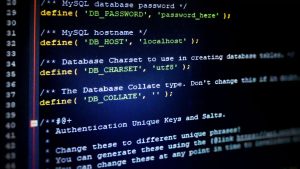Unlocking the Importance of IP Tracking in BSD Environments
Effective IP tracking and monitoring are critical for maintaining network security and ensuring seamless operations in BSD-based systems. System administrators frequently rely on tools and methods like IP address lookup to identify network changes, troubleshoot connectivity issues, and secure networks from unauthorized access. Whether monitoring public or private IPs, BSD’s built-in utilities provide robust solutions to maintain oversight and optimize network performance.
Public IPs, visible to external networks, are essential for connecting systems to the internet, while private IPs facilitate internal communications. Tracking these IPs is crucial for detecting unauthorized activity, resolving connectivity issues, and ensuring compliance with network policies. Many administrators leverage tools such as ifconfig, curl, and online lookup services to verify configurations and monitor changes over time, providing a comprehensive approach to managing network environments.
This guide explores the tools and techniques available in BSD for IP tracking and monitoring, automating notifications, and securing your system against potential vulnerabilities. By the end of this article, you’ll have the insights needed to effectively manage IP tracking in BSD environments, ensuring a secure and efficient network infrastructure.
Understanding IP Address Tracking
IP addresses are unique identifiers that play a crucial role in facilitating communication between devices within a network and across the internet. In BSD systems, tracking IPs is essential for several reasons, including maintaining security, troubleshooting issues, and ensuring compliance with IT policies.
Private vs. Public IP Addresses
Private IPs are used within a local network to identify devices, while public IPs are assigned by internet service providers (ISPs) to connect devices to the internet. Monitoring both types is essential to maintain the health of your network. For instance, tracking private IPs can help detect unauthorized devices within your network, while monitoring public IPs allows you to identify changes that may disrupt connectivity or indicate unauthorized access.
Why IP Tracking Matters
Tracking IP addresses is critical for:
- Security: Detecting and preventing unauthorized access to your network.
- Troubleshooting: Identifying connectivity issues and resolving them efficiently.
- Compliance: Ensuring network configurations meet internal policies and external regulations.
Whether managing static IPs (fixed addresses) or dynamic IPs (which change over time), tracking these addresses is key to maintaining a well-functioning and secure network environment.
Tools for IP Tracking and Monitoring on BSD
BSD systems come equipped with a range of tools that allow administrators to monitor and manage IP addresses effectively. Here’s an overview of the most commonly used tools:
ifconfig
This tool provides a comprehensive view of local IP configurations, allowing administrators to monitor active network interfaces, associated IPs, and subnet masks. It’s particularly useful for identifying changes in local network setups.
curl
Using curl, administrators can query public IPs from external services. For example:
- curl ifconfig.me
- curl icanhazip.com
- curl ipinfo.io/ip
These commands allow real-time monitoring of public IP changes, which is critical for systems using dynamic IPs.
dig
The dig command queries DNS records, enabling administrators to retrieve public IP addresses associated with specific domain names. This is useful for ensuring that DNS configurations align with network requirements.
netstat
With netstat, administrators can analyze active network connections and their associated IPs. This tool is essential for identifying suspicious connections or troubleshooting network performance issues.
sockstat
sockstat offers insights into open network sockets, providing visibility into the IPs and ports in use. This can be invaluable for monitoring application-level connections.
Each of these tools has unique strengths, and when used in combination, they provide a powerful framework for IP tracking and monitoring in BSD environments.
How to Track Your Public IP Address Using BSD Tools
Tracking public IP changes is a key task for maintaining connectivity and security in BSD systems. Here’s how to do it effectively:
Using curl for Public IP Queries
Run commands like curl ifconfig.me or curl icanhazip.com to quickly retrieve your public IP address. These external services return your current public IP, allowing you to monitor changes in real-time.
Using dig for DNS Queries
You can use dig to retrieve public IPs from DNS records. For example:
dig +short myip.opendns.com @resolver1.opendns.com
This command provides your public IP by querying OpenDNS servers, offering an alternative to curl.
Automating Public IP Tracking with Cron Jobs
To monitor IP changes over time, you can create a cron job that periodically logs your public IP:
bash
CopyEdit
#!/bin/bash
curl ifconfig.me >> /var/log/public_ip.log
This script records your public IP in a log file, enabling you to track changes and identify patterns.
Monitoring Local Network IPs in BSD
Local IP monitoring is equally important for ensuring the security and efficiency of internal networks.
Using ifconfig to Monitor Local Changes
Run ifconfig to view active network interfaces and their associated IPs. Regularly monitoring this output helps detect changes or unauthorized devices.
Identifying Unauthorized Devices with netstat and sockstat
Both tools can help identify unexpected connections within your network. For example:
- netstat -an displays all active connections and listening ports.
- sockstat -4 lists IPv4 sockets, showing the IPs in use by various processes.
Automating alerts for changes in internal IP configurations further enhances your network’s security.
Comparison with Online IP Lookup Services
Online services like WhatIsMyIP.com and IPinfo.io offer alternative ways to track IPs. These services often provide detailed information about geolocation and ISP data.
Advantages of BSD Tools
- Full control over data security and privacy.
- Integration with automation scripts for real-time monitoring.
Advantages of Online Services
- Enhanced detail about IPs, such as geolocation and ISP.
- User-friendly interfaces requiring minimal technical knowledge.
Combining BSD tools with online services allows administrators to balance efficiency and detail in their IP tracking workflows.
Automating IP Change Notifications in BSD
Automation simplifies IP tracking and enhances responsiveness to changes.
Writing Shell Scripts
A simple script to detect IP changes might look like this:
bash
CopyEdit
#!/bin/bash
CURRENT_IP=$(curl ifconfig.me)
if [ “$CURRENT_IP” != “$(cat /var/log/last_ip.log)” ]; then
echo $CURRENT_IP > /var/log/last_ip.log
mail -s “Public IP Changed” admin@example.com <<< “New IP: $CURRENT_IP”
fi
Sending Email Alerts
Using BSD mail utilities like sendmail, you can set up email notifications for IP changes, ensuring timely updates.
Best Practices for Secure IP Tracking
To maintain security while tracking IPs:
- Avoid exposing IP tracking data publicly.
- Use VPNs and firewalls to protect your public IP.
- Ensure IP logs are securely stored with appropriate file permissions.
- Conduct regular audits to detect unusual IP activity and mitigate risks.
Mastering IP Tracking in BSD Environments
Effective IP tracking is a cornerstone of secure and efficient network management. By leveraging BSD’s powerful tools and automating processes, administrators can maintain full control over both public and private IPs. Combining these tools with best practices ensures robust network security and optimized performance.









No Responses